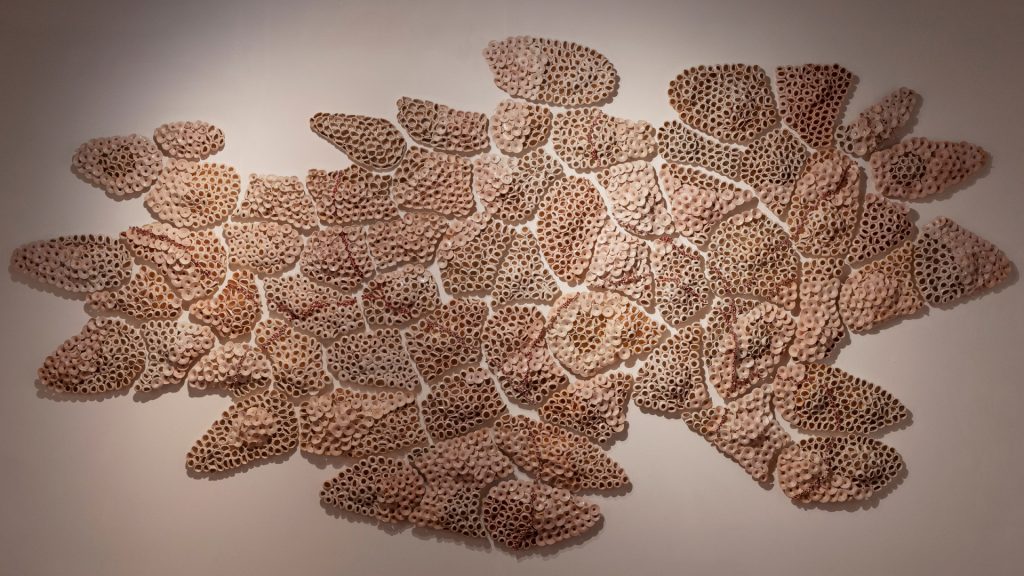
However different the several Personal Structures installations in the three venues of Palazzo Mora, Palazzo Bembo, and Giardini della Marinaressa, two themes are fairly apparent: nature and feeling.
Different worlds meet, conveyed by non-conventional materials – cloth, ceramics, stone, rugs, iron… – to reinvent the world of art, pushing it closer to the realm of design and the dimensions of perception. The standard-bearers of this vision are eleven artists of diverse extraction who chose Venice and exhibition Personal Structures – Reflections as the platform for their work. However different the several installations in the three venues of Palazzo Mora, Palazzo Bembo, and Giardini della Marinaressa, two themes are fairly apparent: nature and feeling. Nature, the supreme Mother that lives around and within us, and feeling: what art makes us feel, and the fragility and emptiness that we share as fellow human beings.
This original art can take us on a journey other than ordinary, a bilateral discovery that touches, on one side, the traditional perception of artmaking that re-invents and re-creates itself, and on the other, the human potential that either seems almost lost, orphaned, and hence in need to investigate its connections with the world and its origins, or what pushes forward the intricate, difficult synoecism that is supposed to make us all come as one.
Andrea Vinković is a Croatian artist who chose the world’s fragilities and mysteries as her muse. Vinković shows ideas and feelings using ceramics, a fragile material that uses its own fragility to enhance its intrinsic beauty. Her new piece Emergence, on display at Palazzo Mora, reflects not only on the complexity of nature, but also on nature’s similarity with human beings, proving an implication as apparent as it is overlooked: all living organisms share the same home. The artist used this installation, which reminds of the shapes of corals and plankton, to show how the principles of change and adaptiveness in society and economy grow parallel to the natural ecosystem, and how these different entities, while often competing with one another, may follow common rules.
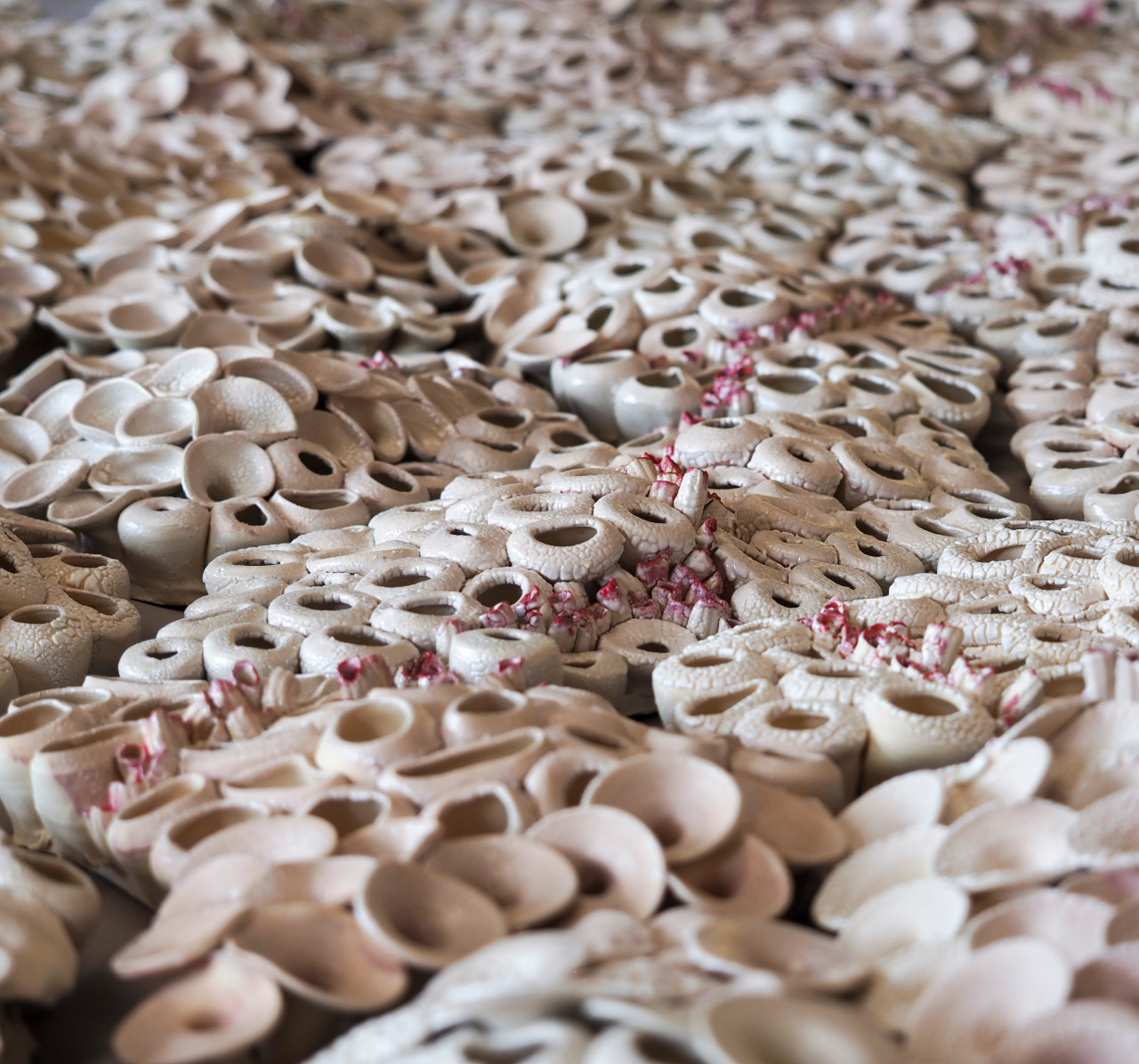
Bjørnådal Arkitektstudio is a Norwegian architecture studio that employs a very modern style to build upon and boost natural lighting using glass, a versatile, effective material, thus uniting structure and infrastructure, namely: the environment. In their installation Spheres, at Giardini della Marinaressa, Bjørnådal Arkitektstudio placed glass orbs of different size, finely decorated, on a six-armed iron lattice, a sort of treasure chest shaped like a flower bud, carrying jewels within.
Handmade glass – Helen Twigge-Molecey couldn’t choose a better way to highlight her relationship with Venice. Her art, made by the self-taught artist, is now on display at Palazzo Mora. Her piece Fungi shows the mafic of glass shaping unique specimens of easily identifiable shapes, all inspired by natural fungi. Light has a co-protagonist role here, too, helping the artwork coming to life in an exciting show of nuances and luminous colours.
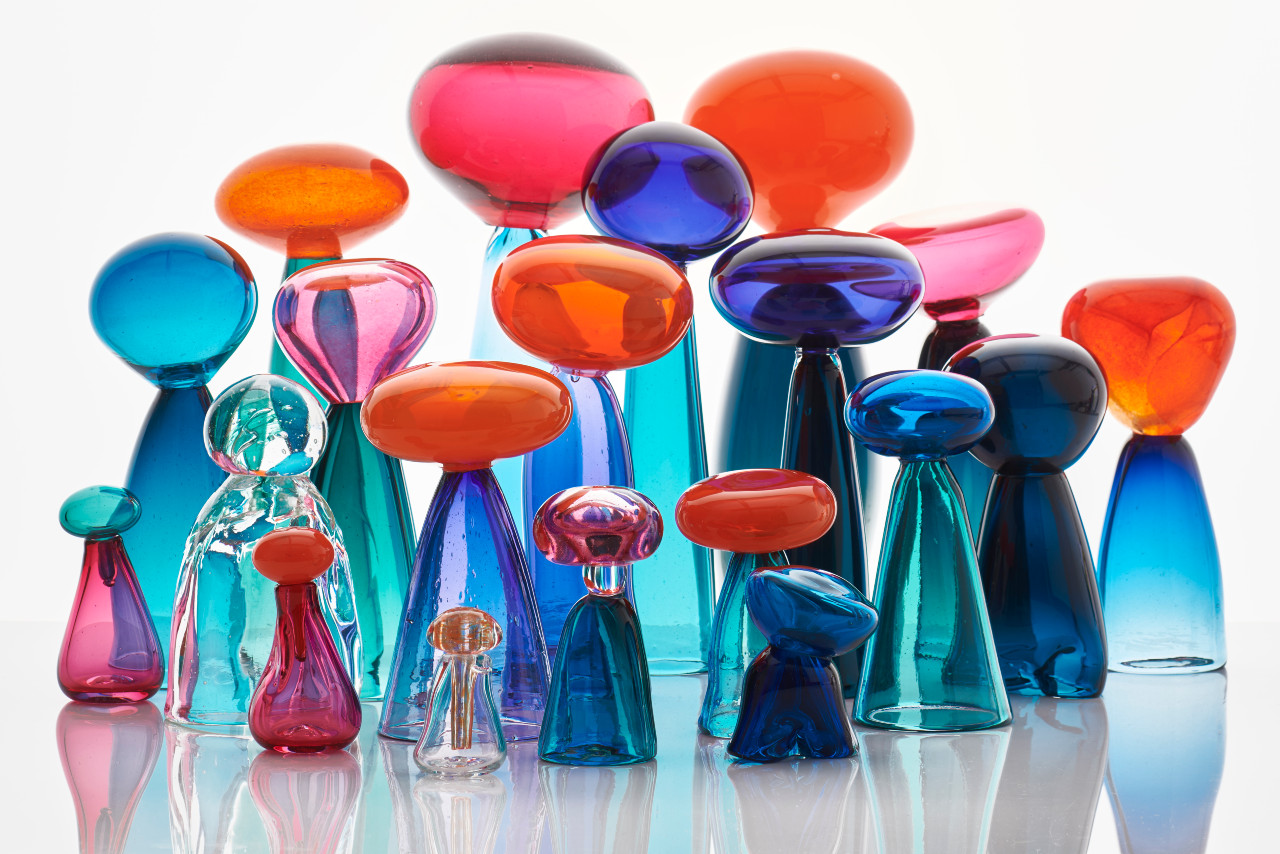
Armenian artist Hrachya Vardanyan tries to convey his love for nature, art, politics, and culture in his art, denouncing the complexity and conflicts that live in them. His installation crack{s}, at Palazzo Mora, comprises two large paintings. In them, we may find the artist’s stream of consciousness, a whirlwind of intricate thoughts. We’ll find ourselves speechless before this very original art: unusual patterns and shapes disappear, leaving room for something deeper and more metaphorical that transcends the limits and borders of space and time. Ruined, abstract canvases might as well represent the beginning of everything as well as its demise. Whoever will watch this art will naturally ask questions, though answers will be far from obvious.
Ian Hagarty and Danny Kaufmann are two professors at Marshall University, Virginia, who find their inspiration from many elements, mainly natural. In particular, they like rivers, their curves, the space they define with their meandering. The protagonists of installation A Shared Reverence, at Palazzo Bembo, are the river’s strong, lively colours intersecting its landscape. We will look at a vision from above, a bird’s-eye view that will grant us the privilege to understand the secrets of surrounding nature. We might say that Hagarty’s and Kaufmann’s art represents an immersive journey, with us, the public, being an integral part.
The Idol is Jacques Jarrige’s artwork on display at Palazzo Mora that voices the impulsiveness of sign and forms in space. Suspended, floating in a vacuum, the French artist’s pieces are rendered in humble materials, like aluminium and brass, granting them vitality. For Jarrige, it is important to have a direct contact with materials, because through material, effort, and work, art is enriched and artists can convey their stylistic and existential identity. Whoever looks at his art will find a fragment of the artist himself, in a perpetual connection between artist, material, artwork, and public.
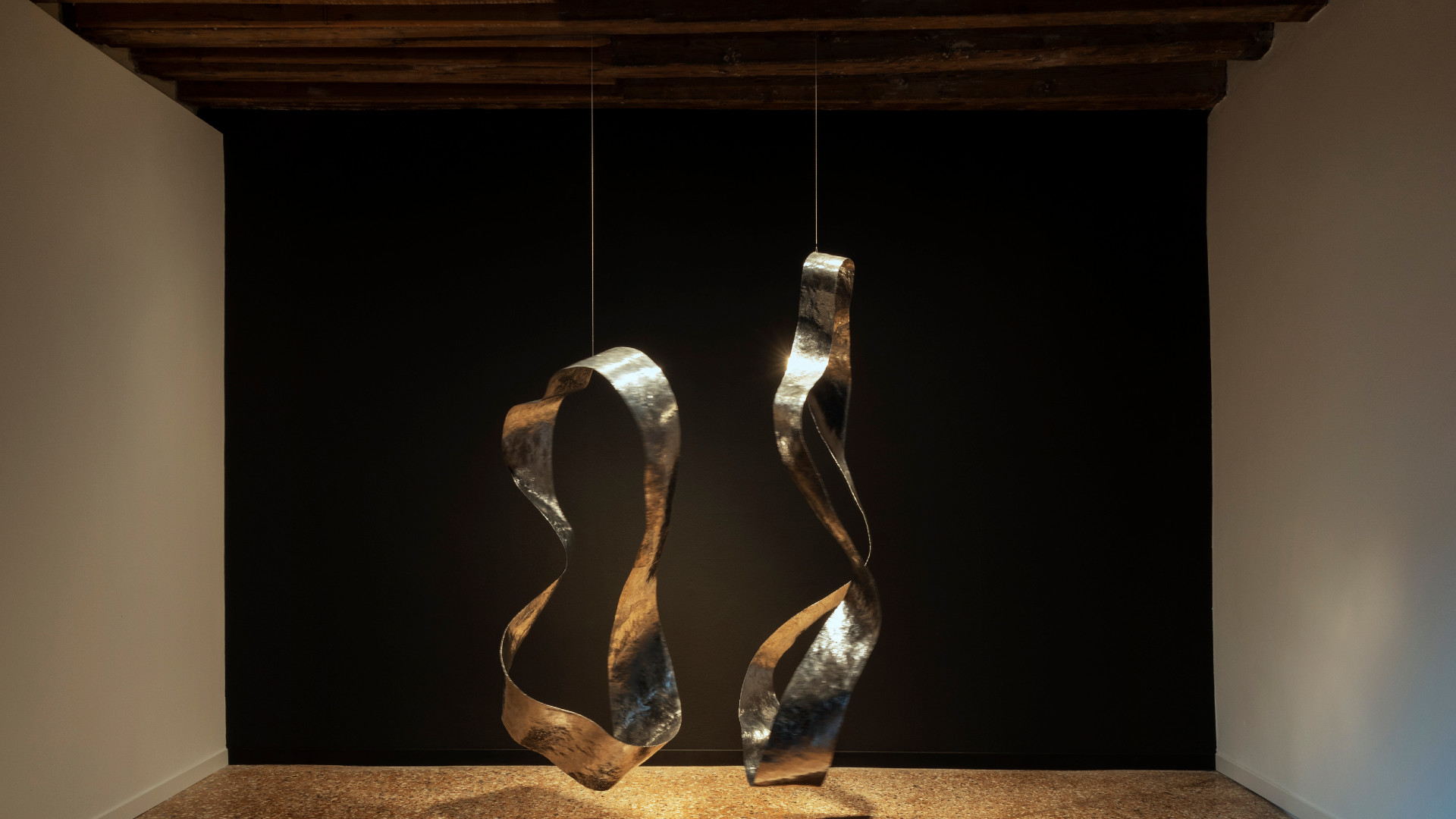
Kwak Hye-Young, a Korean artis, uses ceramics to capture and interpret the sound of rain falling on her art: tablets covered in cobalt, whose dark colour absorbs light like soil would falling rain. The installation at Palazzo Mora has been created, like much of Kwak’s art, by the very raindrops that fall from the sky. The mix of rain and clay creates original palettes of colour, mirroring the artist’s intention to make the sound of rain visible.
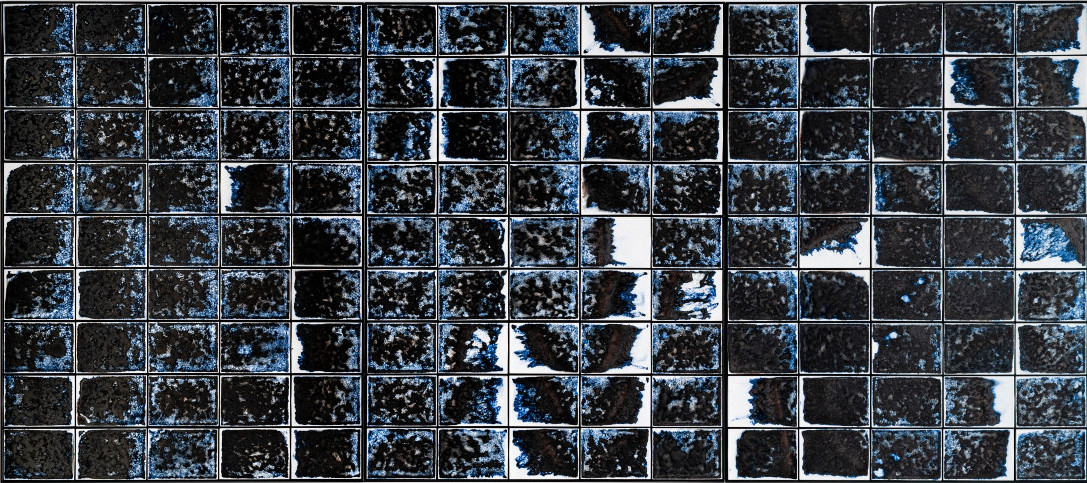
Lori Weitzner, an internationally-renowned artist for her textile, wallpaper, rug and jewellery art, installed Ode to Color at Palazzo Mora. Weitzner immerses the spectator into a world of nuances and original correlations. The installation builds on ten colours that reflect founding moments of our existence (love, passion, work, reflection…) and inspires viewers to see themselves in these colours and to see new and hidden meaning they hadn’t yet considered.
Xi Nan is a New York-based Chinese artist that uses art – her Infinity ∞ Series at Palazzo Bembo – to convey a very important message: it is ok to be not okay. We are all fragile, in one way or other, and the artist herself states, through her art, how she also occasionally runs into emotional and expressive difficulties. It is not always easy to be accepted, even less so to ask for help when we need it. Xi Nan’s multi-sensorial installation comprises small artefacts, sculptures, jewels, pieces of furniture made from different materials, including scrap. The artist invites us to be more lenient with ourselves and to accept everyone’s fragilities.
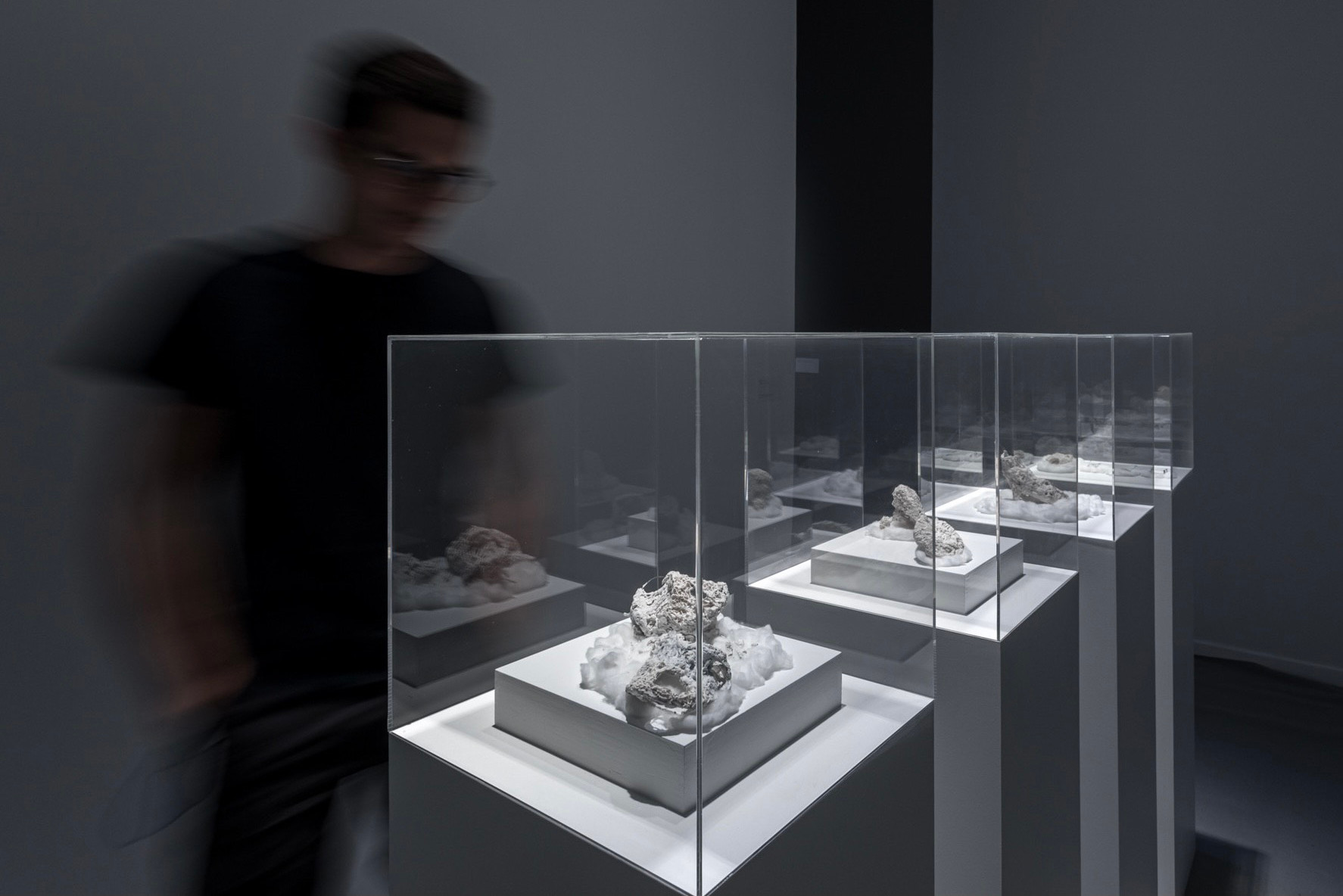
Zakaria Rugs is a workshop funded by Philip Rosenberger in 2019. Rugmaking is an art that finds its place between innovation and expression, a synthesis of tradition, craft, and modern art. These artworks are not merely pieces of décor, but the representation of a collective attention to sustainability. This aspect is also apparent in the material used by Zakaria Rugs: natural fibres treated with natural dyes, very strong and long-lasting.
Multiple forces are behind project Arroyo Bridge Section, a concept by MADWORKSHOP in cooperation with R. Scott Mitchell/Gigante AG. Mary, David Martin, and R. Scott Mitchell, who linked with students, producers, and other artists to develop common project. Arroyo Bridge Section shows the multiple facets of shapes in robotized, manufactured sculpture. The artwork, exhibited at Giardini della Marinaressa, aims at fostering debate on modern and future pieces of infrastructure, because the real limit is to set our own limits, inherent to the possibilities of art.
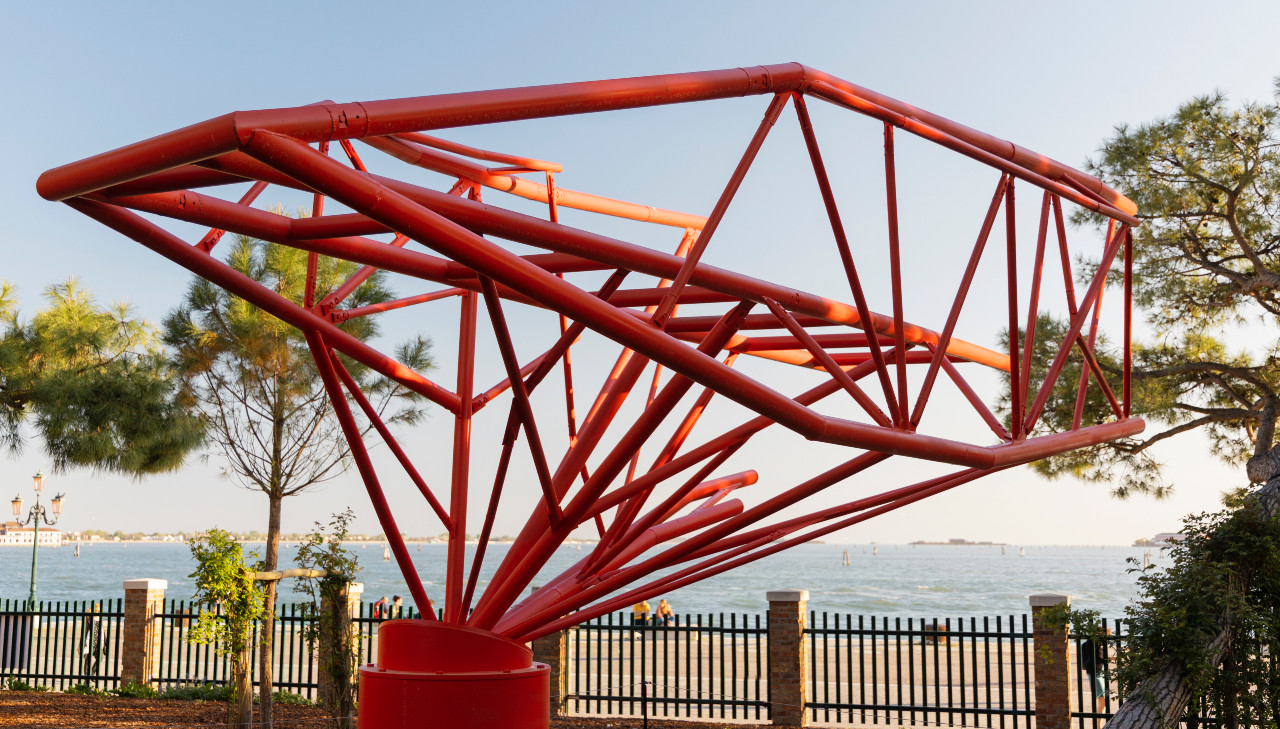
Foto in evidenza: Emergence, AndreaVinkovic